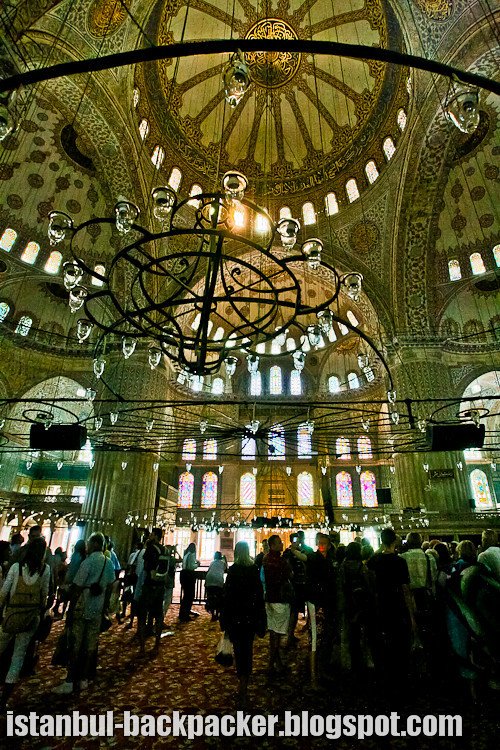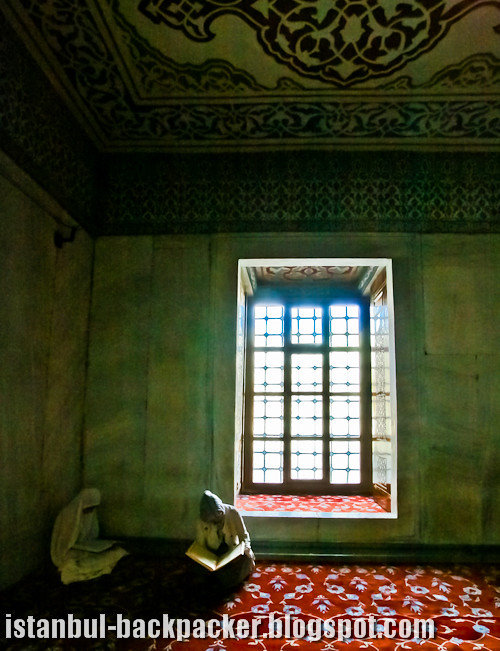
Inside Sultanahmet Blue Mosque
The Sultan Ahmed Mosque in Istanbul is popularly known as the Blue Mosque for the blue tiles adorning the walls of its interior. It was built between 1609 and 1616, during the rule of Ahmed I. Like many other mosques, it also comprises a tomb of the founder, a madrasah and a hospice. While still used as a mosque, the Sultan Ahmed Mosque has also become a popular tourist attraction.
At its lower levels and at every pier, the interior of the mosque is lined with more than 20,000 handmade ceramic tiles, made at Iznik (the ancient Nicaea) in more than fifty different tulip designs. The tiles at lower levels are traditional in design, while at gallery level their design becomes flamboyant with representations of flowers, fruit and cypresses.
The upper levels of the interior are dominated by blue paint. More than 200 stained glass windows with intricate designs admit natural light, today assisted by chandeliers. On the chandeliers, ostrich eggs are found that were meant to avoid cobwebs inside the mosque by repelling spiders. The coloured glass for the windows was a gift of the Signoria of Venice to the Sultan. Blue tiles on the main dome have given the mosque its nickname.
Pope Benedict XVI visited the Sultan Ahmed Mosque on 30 November 2006 during his visit to Turkey, turned towards Mecca in a gesture of Muslim prayer and conducted "Silent Prayer", having removed his shoes, paused for a full two minutes, eyes closed in prayer, standing side-by-side with the Imam of the Blue Mosque.

Two girls studying Qur'an inside Sultanahmet Blue Mosque in a silent corner.
